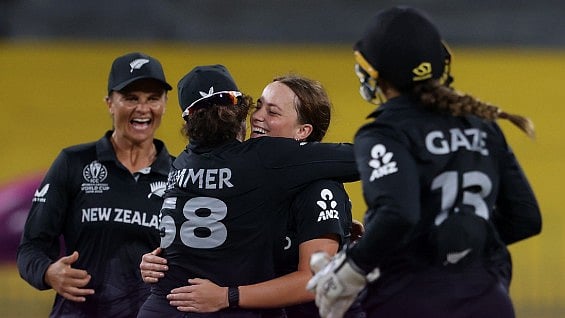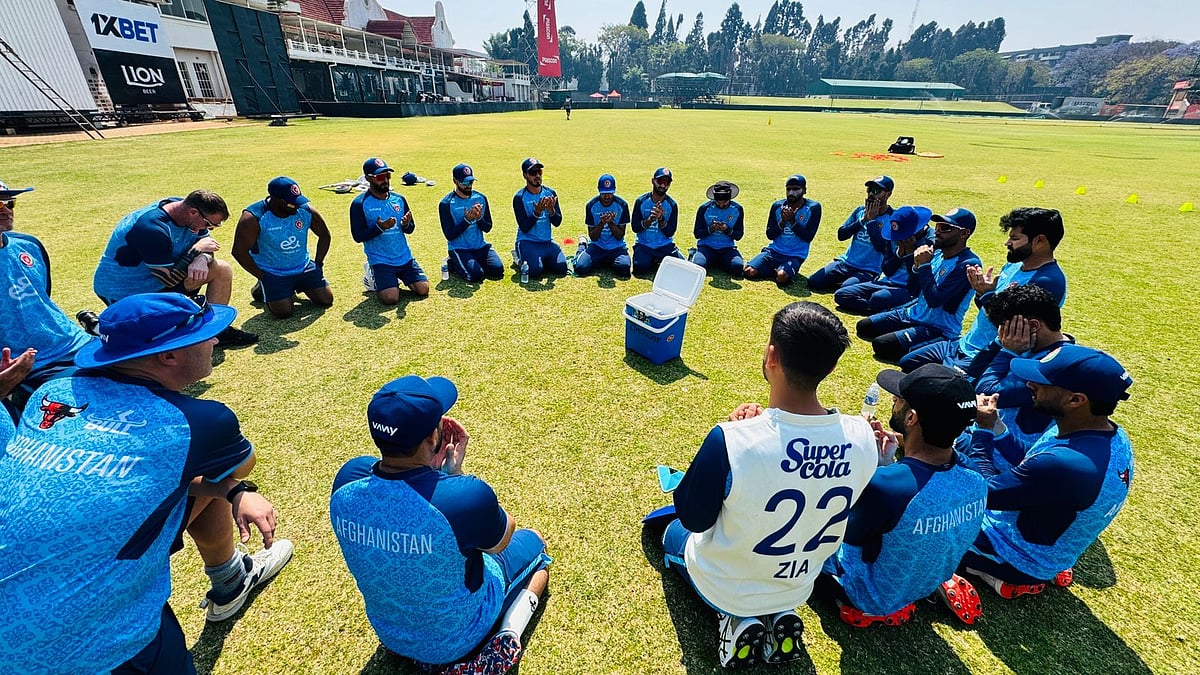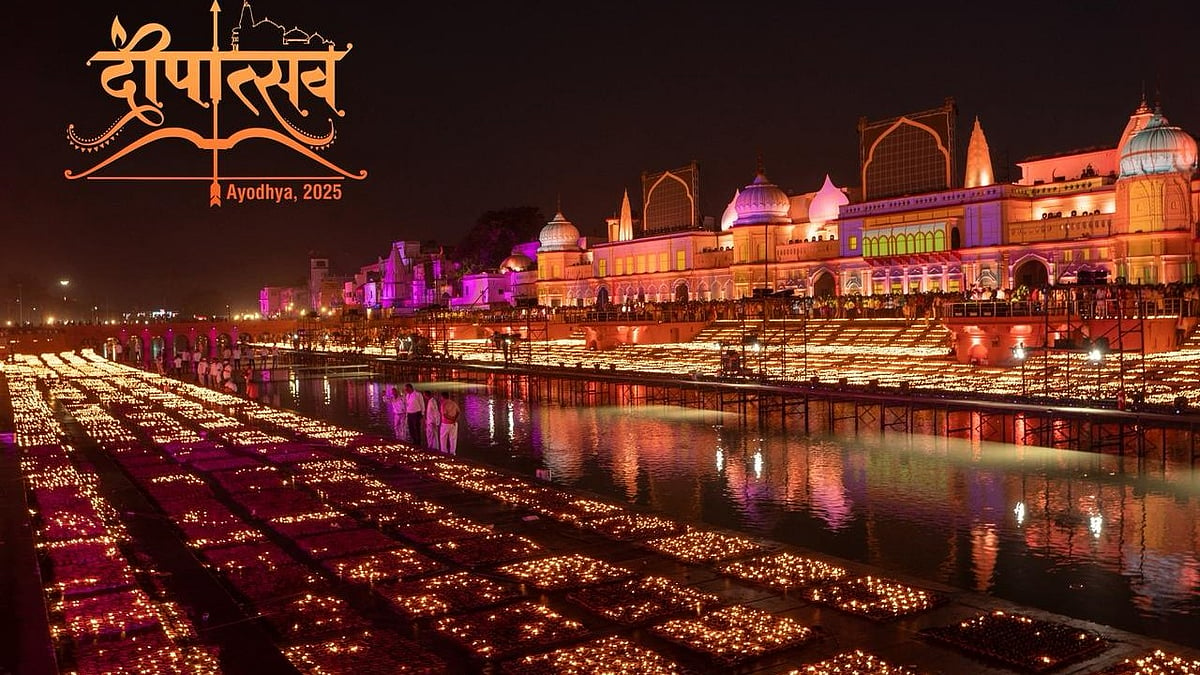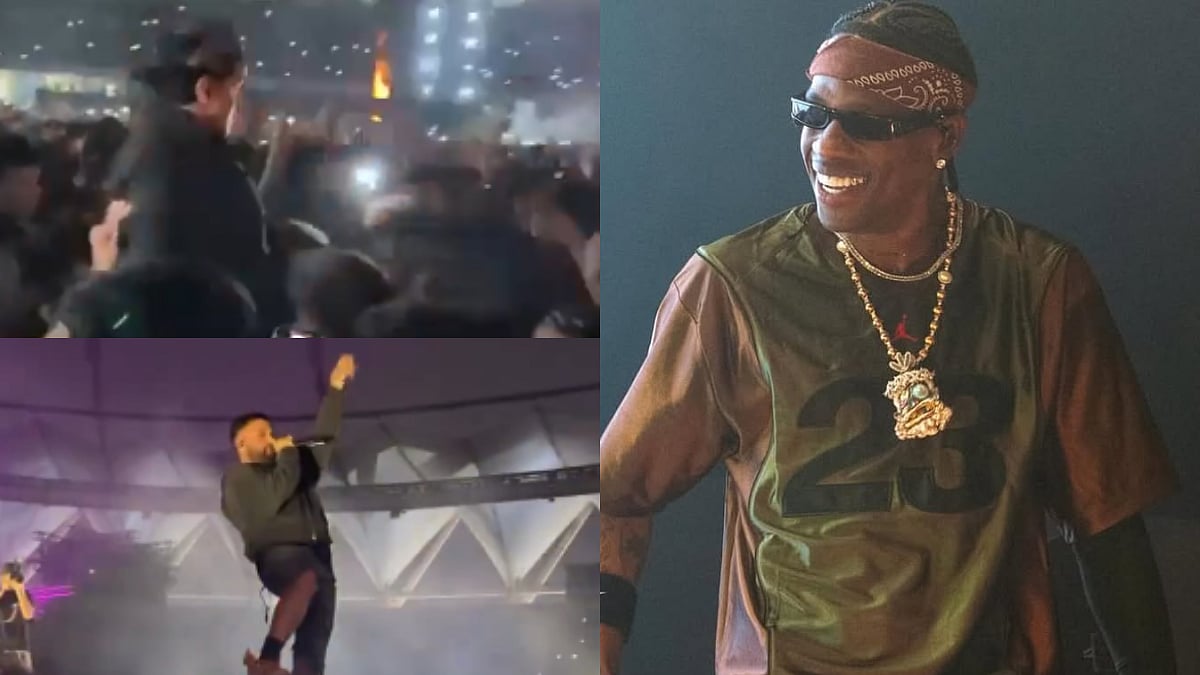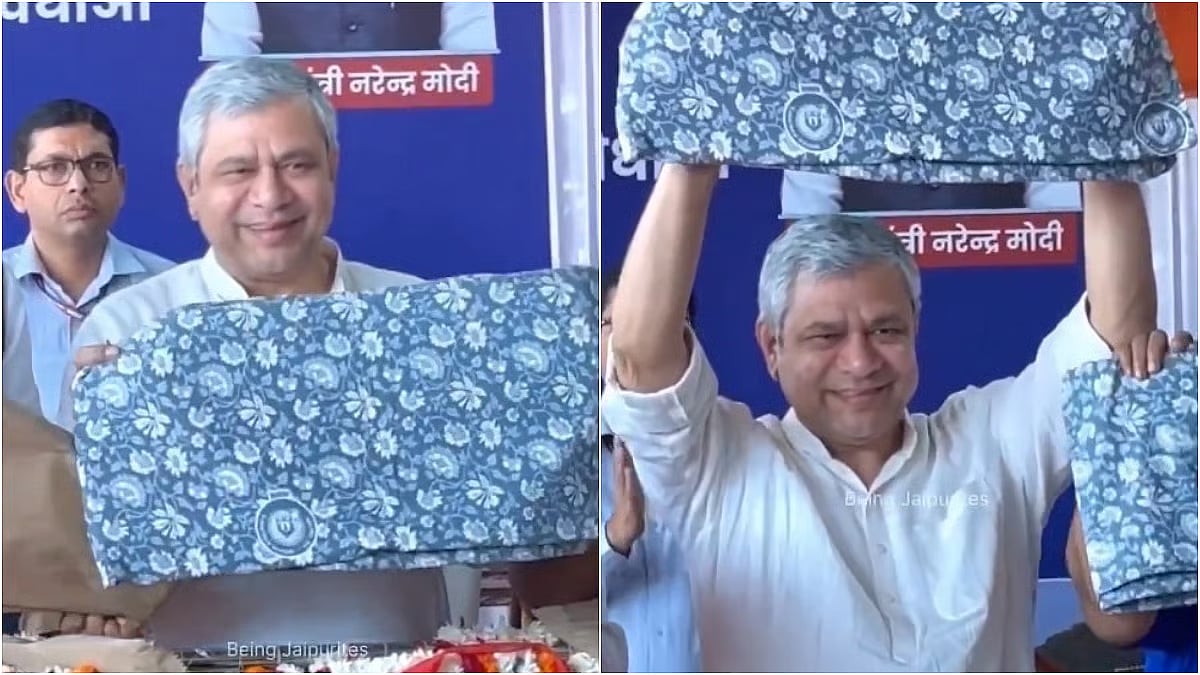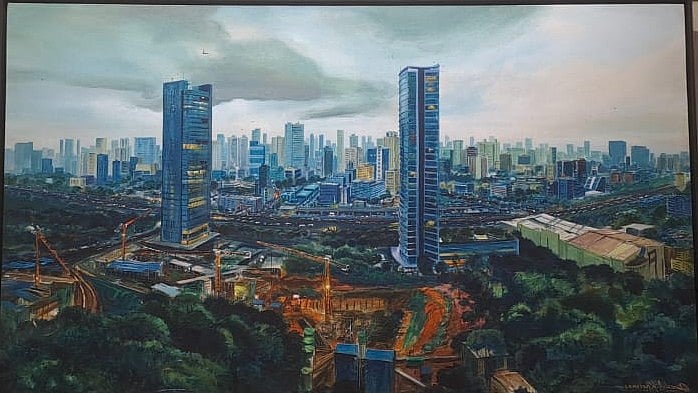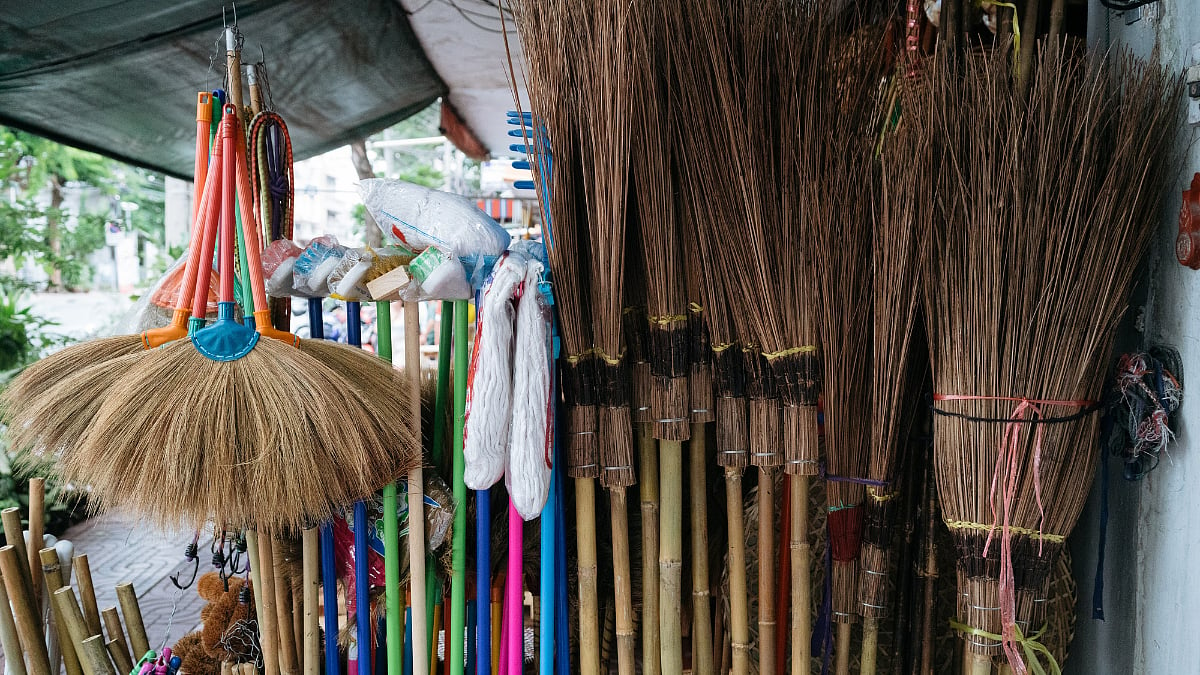While the non-Maharashtrians might be super excited to finally see a musical play on Lord Krishna, the Maharashtrians will be fascinated by the sheer scale of the production and the digital and VFX impact.
A Marathi theatre lover is familiar with musicals as they have been a part of the theatre culture for over a century. Musicals depicting Krishna’s childhood, Rukmini Swayamwar, Shishupaal Vadh, Subhadhra wedding, Kurukshetra, etc, have entertained the Maharashtrian crowd with great singer-actors.
Rajadhiraaj, however, beats all experiences and takes the theatre experience to a different level. The experience starts with the stage curtain — specially designed for Rajadhiraaj, the curtain is a huge pichwai painting that can delight any art lover with its detailing. One finds the pichwai detailing, though sporadically, throughout the play in the digital sets and VFX visuals.
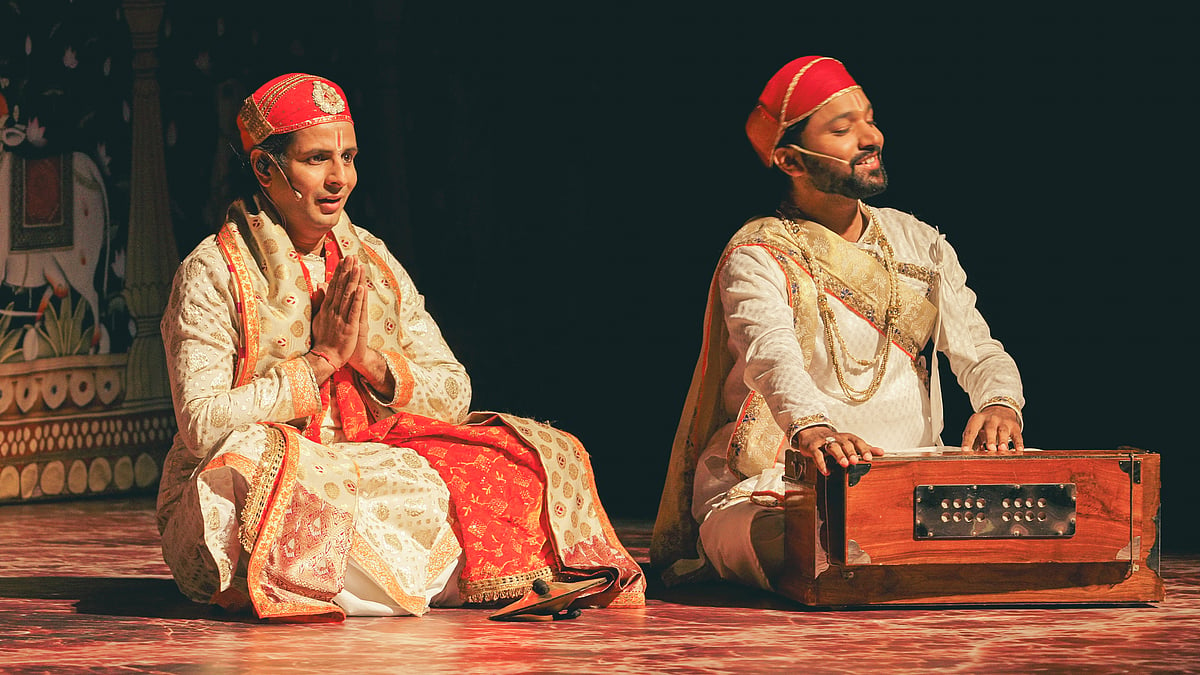
The play opens with the Sutradhar singing and inviting us. While the play does follow the traditional pattern of theatre, instead of the ‘nati’ here we have a cute little girl that takes forward the story along with the Sutradhar.
Like any Krishna story, this one starts with the birth of the Lord. It shows us the antics of Krishna as a child, the assassination of Kans, and his relationship with Radha before taking a break. They go on to show how Rukmini sends Krishna a letter proclaiming love and requesting him to take her away. It is interesting to note that instead of the other popular stories, writer Prasoon Joshi has chosen to show the story with Jambuwant. Prasoon admits that it was difficult to choose the stories, and he chose Jambuvwant to show the connection between the two avatars of Vishnu.
The enlightening parts of the script remain the origin of Shrinathji and how the name Ranchoddas was given to Krishna. It is intriguing to see the journey of the Shrinathji idol from Mathura to Mewar and the start of Pushti Marg by Prabhu Vallabhacharya.

The success of the script lies in short and sweet dialogues that take forward the story. The songs, which form an integral part of the script, too are captivating. The varied dialects associated with Krishna in Gujarat, Mewar, Mathura, Gokul, and Vrindavan are used in songs and dialogues. Sachin-Jigar have excelled themselves as music director duo. They have captured the crux of the story and the essence of different connected cultures while creating music that reaches the audience and makes them clap along.
Three cheers to choreographres Bertwin Ravi Dsouza and Shampa Gopikrishna. While Shampa brings the spirit of kathak that she has inherited from her father, the late Gopi Krishna, together the duo brings to the table the folk ethos concomitant to Krishna. The choreography is extraordinary. The dancers put their exuberant energies into every composition taking the dances and songs to a different level with their enactment.
The singer-actors are talented. A special mention of Sharvari Deshpande (Yashoda), Swapnil Ajgaonkar (Nand), and Kavya Limaye (Rukmini) is a must. Their emotive renderings touch your heart. Their voices have a great range, and they sing, dance, and act effortlessly.
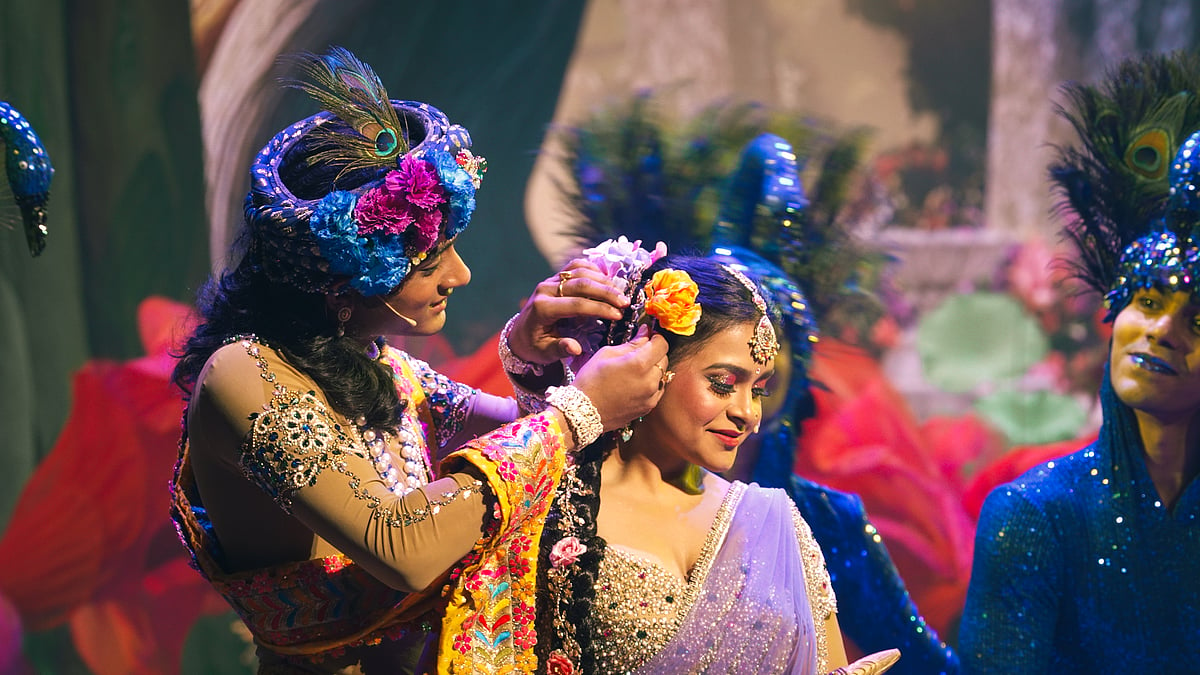
What takes you beyond the regular is undoubtedly the set and production design with its live digital displays and VFX. The use of wings for projected ambience pictures and VFX makes each backdrop come alive. Especially the images of the sea during the creation of Dwarka — you feel that you will soon feel the spray of water. The sets of every location are well planned and executed.
The only aspect of the play that leaves you a little disappointed is the costume design. While some dresses (Rukmini) are good, largely the choice is quite tacky.
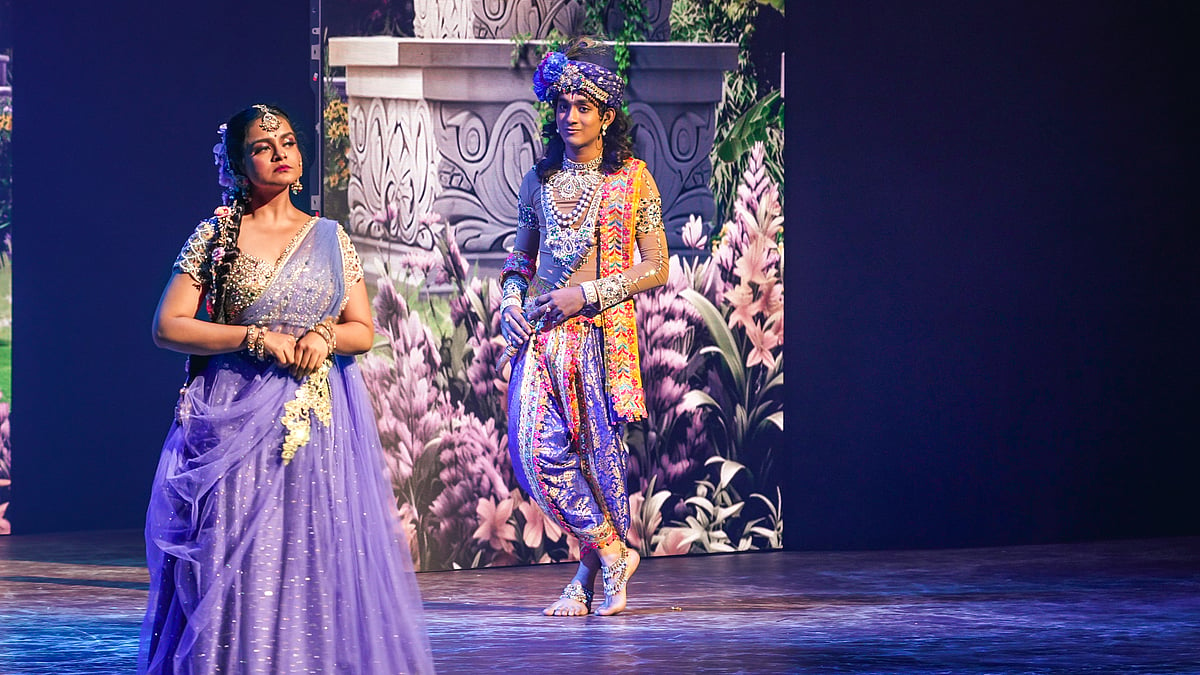
Overall, Rajadhiraaj is a play that one should watch to get carried away in the bhakti ras that bowls you over with the music, dance compositions and singing of the Sutradhar and main characters.

